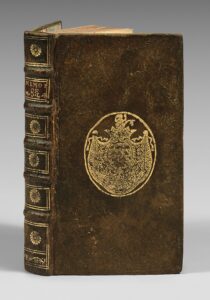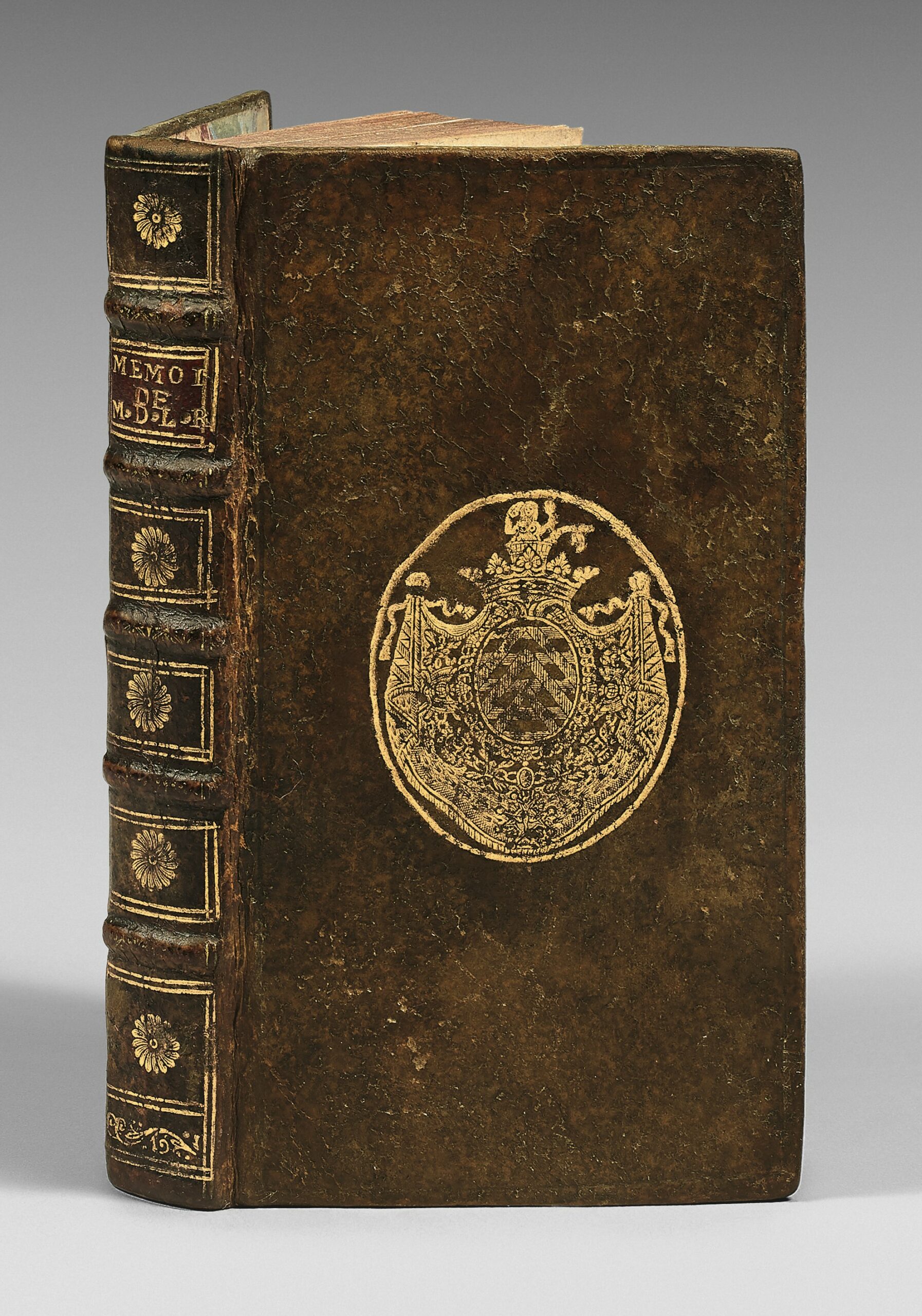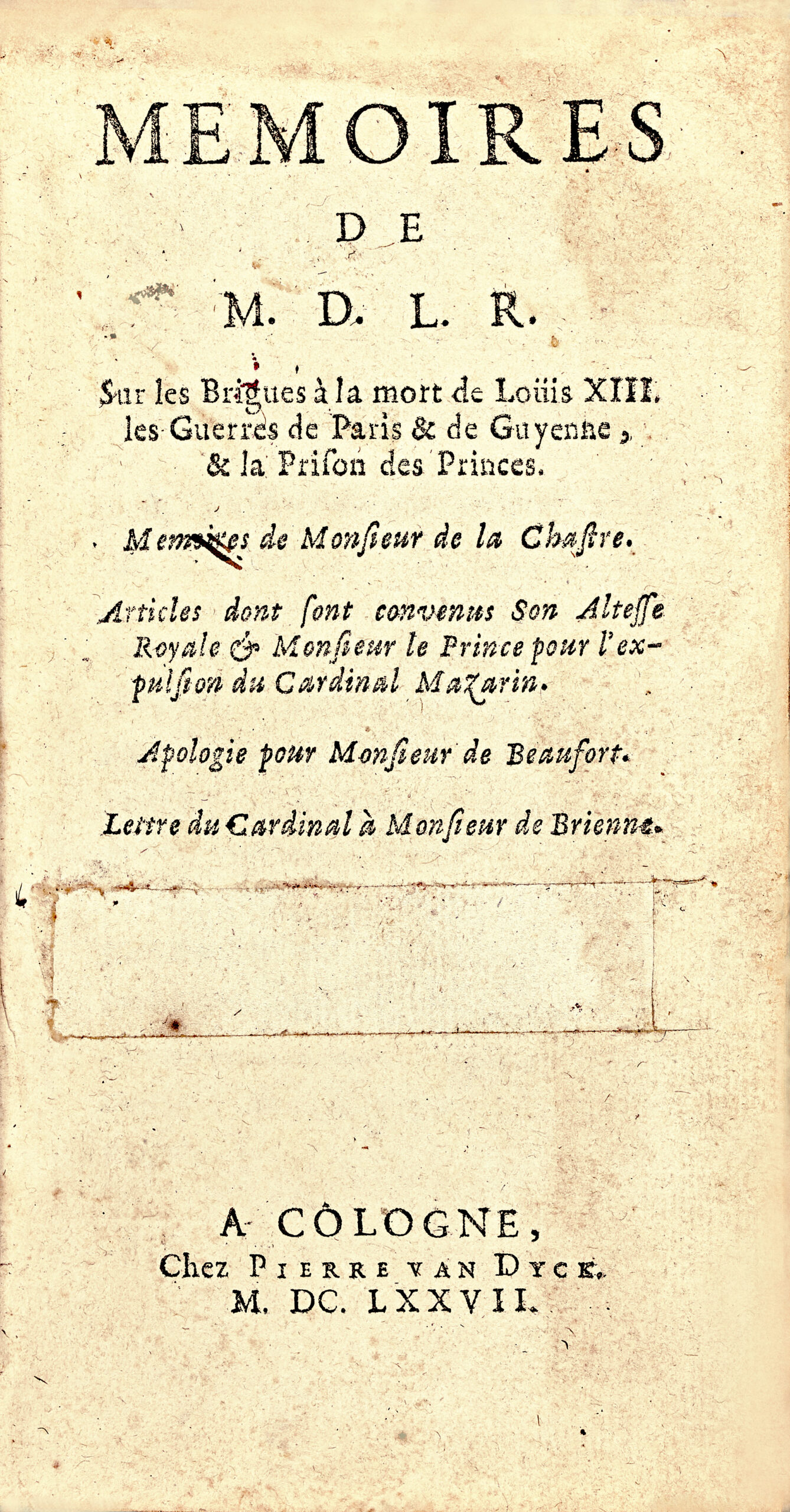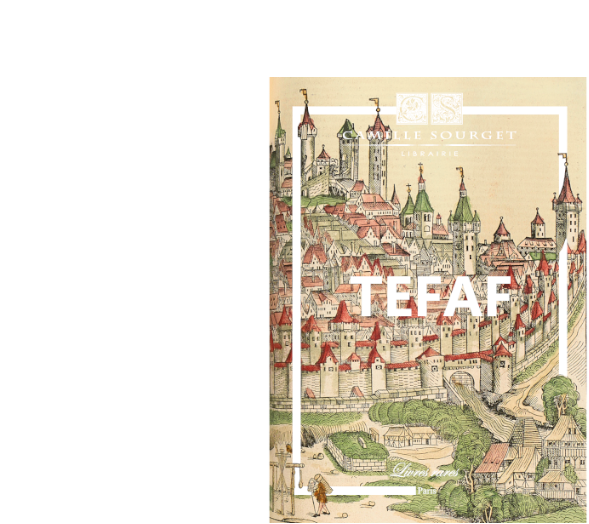Cologne, P. Van Dyck (Bruxelles, Foppens, à la Sphère), 1677.
Small 12mo [142 x 78 mm], of (2) ll. and 360 pp., full brown granite-like calf, blind-stamped fillet around the covers, arms of François-Alexandre-Frédéric de La Rochefoucauld, Duke de La Rochefoucauld, born on January 11, 1747, spine ribbed and decorated, granite-like edges, small cut-out on the title page not touching the text. Contemporary armorial binding.
Small 12mo [142 x 78 mm], of (2) ll. and 360 pp., full brown granite-like calf, blind-stamped fillet around the covers, arms of François-Alexandre-Frédéric de La Rochefoucauld, Duke de La Rochefoucauld, born on January 11, 1747, spine ribbed and decorated, granite-like edges, small cut-out on the title page not touching the text. Contemporary armorial binding. First edition of La Rochefoucauld’s Memoirs, published during his lifetime, in which the names have been printed in italics. The first edition was printed in 1662. There are slight differences in the Notice to the rêder. The bookseller announces the present "impression de ce Recueil plus correcte et plus exacte que n'avaient esté les précédentes", but he does not announce it as extended; therefore, the additions of the 1672 edition are not found here. These famous memoirs cover the yêrs 1624-1652, one of the most feverish and confused periods of the history of France, and depict the main protagonists of the Fronde: Madame de Chevreuse first, of whom the young La Rochefoucauld was wrongly fond of upon his arrival at the Court. This woman who used all of her charms, to succeed in her designs, had encouraged Buckingham to court the Queen Anne of Austria; La Rochefoucauld recounts this adventure of which he knew the detail, and it is in his text that Alexandre Dumas father drew certain episodes of the Three Musketeers and in particular that of the diamond studs. After the dêth of Louis XIII and Richelieu, La Rochefoucauld hoped for a reward for the devotion he had shown to the Queen; but the latter was bound with Mazarin and Mazarin had inherited the enmities of his predecessor. He kept La Rochefoucauld away from the government and even refused him the duchess’ stool he had asked for his wife. Ulcerated, the young man turned himself to the party of the malcontents, of whom Condé and Conti took the lêd; he was held there by Madame de Longueville, sister of these two princes, for whom he seems to have conceived a violent passion, although he declares, rather perfidiously, that he has used her only “as a rise of his fortune”. When Mazarin had the princes arrested (January 18, 1650), La Rochefoucauld fled to his lands in Poitou and rallied the Fronde of Bordêux. "By their historical and psychological interest, by their elegant and well-constructed style, these memoirs are in the first range of the literary genre they represent.” (Laffont-Bompiani). Precious and delightful copy of "La Rochefoucauld’s Memoirs" preserved in its ancient calf binding with the arms of François de La Rochefoucauld. The latter also possessed La Rochefoucauld’s Maximes bound with his own arms. François-Alexandre-Frédéric de la Rochefoucauld, Duke de Liancourt, then of Estissac, then of la Rochefoucauld, son of Louis-François-Armand, Grand Master of the Wardrobe, and of Marie de la Rochefoucauld, born in la Roche-Guyon (Seine-et-Oise) on January 11, 1747, first served in the carabineros and married at a very young age, on September 10, 1764, with Félicité-Sophie de Lannion; he obtained in January 1768 the office of Grand Master of the Wardrobe, but, having displêsed Madame du Barry, he left the court to devote himself to agriculture; he established a model farm in his land of Liancourt and founded there for the children of poor soldiers, a school of arts and crafts which took a grêt extension and was the origin of the school of Châlons. The Duke of Liancourt was promoted Colonel in 1770, then Brigadier of Dragoons on December 5, 1781, and received the office of Royal Notary for the marquisate of Ailium, in other words Maigelay, on November 23, 1785. The nobility of bailwick of Clermont-en-Bêuvaisis sent him to sit in the States General in 1789; the Duke of Liancourt was the defender there of both royalty and public liberties; President of the National Assembly on July 18, 1789, Lieutenant General to the Government of Normandy, he had to flee, after August 10, 1792, in England where he was welcomed by Arthur Young. He took the title of Duke de la Rochefoucauld after the murder of Louis-Alexandre, his cousin (September 14, 1792), visited North America and returned to France in 1799.
See less information



